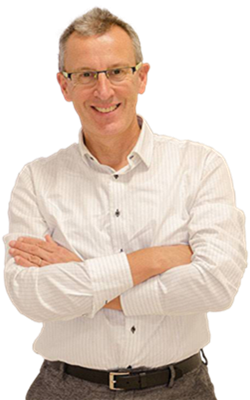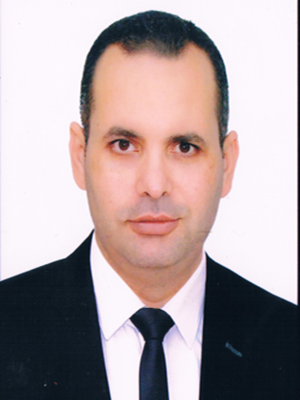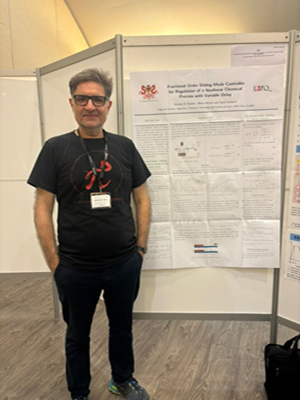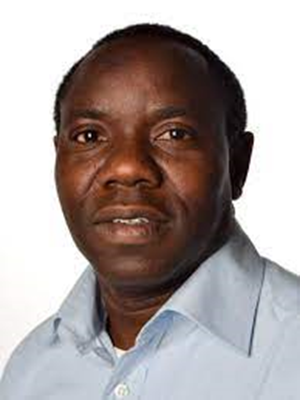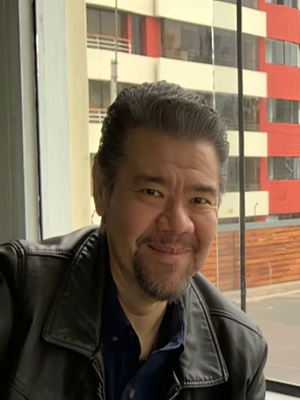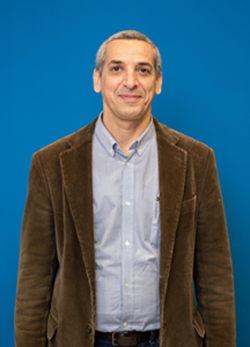
|
|
|
Invited SpeakersEnrique Zuazua Friedrich-Alexander-Universität CONTROL AND MACHINE LEARNING In this lecture, we will discuss recent results from our group that explore the relationship between control theory and machine learning, specifically supervised learning and universal approximation. We will take a novel approach by considering the simultaneous control of systems of Residual Neural Networks (ResNets). Each item to be classified corresponds to a different initial datum for the ResNet's Cauchy problem, resulting in an ensemble of solutions to be guided to their respective targets using the same control. We will introduce a nonlinear and constructive method that demonstrates the attainability of this ambitious goal, while also estimating the complexity of the control strategies. This achievement is uncommon in classical dynamical systems in mechanics, and it is largely due to the highly nonlinear nature of the activation function that governs the ResNet dynamics. This perspective opens up new possibilities for developing hybrid mechanics-data driven modeling methodologies. Throughout the lecture, we will also address some challenging open problems in this area, providing an overview of the exciting potential for further research and development. --------------------------------------------------------------------------------------------------------------------- Mohammed Hachama National Higher School of Mathematics Nonlocal approaches in image processing Partial differential equations and variational approaches are powerful tools for modeling physical phenomena. They are used in several image processing applications such as restoration, enhancement, combination, ... Their study is important to demonstrate the existence and uniqueness of solutions, study their properties and asymptotic behaviors, and propose techniques for their resolution. On the other hand, non-local image processing techniques allow to take into account the relationship and interaction between spatially distant pixels. This includes techniques using non-local differential operators, non-local functionals, or those based on fractional derivatives. These relatively recent approaches have shown superior performance at the cost of higher computational times. The aim of this presentation is to present non-local models (PDEs and functionals) used in image processing. We will focus on the existence and uniqueness of solutions, as well as the design of fast and efficient algorithms. These models will be applied to shadow removal and image fusion problems. --------------------------------------------------------------------------------------------------------------------- Antonio Di Teodoro Universidad San Francisco de Quito Two-Sided Fractional Monogenic Functions In this talk we study two-sided (left and right) axially symmetric solutions of a generalized fractional Cauchy-Riemann operator. We present a method based on the Cauchy-Kowalevski extension theorem to obtain two-sided fractional monogenic polynomial. --------------------------------------------------------------------------------------------------------------------- Anotida Madzvamuse University of British Columbia Analysis and simulations of bulk-surface reaction-diffusion systems with In this talk, I will derive Turing diffusion-driven instability conditions for bulk-surface reaction-diffusion systems which describe naturally the spatio-temporal inteactions between active and inactive Rho GTPases in cell biology. Bulk-surface reaction-diffusion equations couple bulk reaction-diffusion process, those taking place inside the cell cytosol, with surface reaction-diffusion processes, those taking place near or on or in the plasma membrane. The mathematical formalism couples Laplace and Laplace Beltrami operators which brings several challenges for their analysis. Under appropriate geometric assumptions ---------------------------------------------------------------------------------------------------------------------
Jorge Honles
Instituto de Investigación para el DesarrolloModeling pesticide pollution risk at a small geographic scale and the relationship with human health: case of Peru Peru is one of the main food providers in South America. With approximately 11.6 million hectares of cultivated land, the stakes for managing pesticide pollution are high. As a result of such intensive agricultural practices, pesticide residues pose a significant threat to the environment and to public health. According to the Peruvian health authorities, cancer is the second leading cause of death. Despite the implementation of health surveillance programs in Peru, there is still a lack of tangible information that prevents an accurate description of environmental risk factors and cancer burden in the country. This research aims to offer insights into the dynamics of pesticide dispersion and the implications for public health in Peru.Using pesticide chemical and physical properties and georeferenced seed data bases such as pesticide use, agricultural areas, production of permanent and transitory crops, hydrographic areas, slope, precipitation, organic carbon, and soil textures, we are currently calculating the percentage of pesticide residues in soil and surface water. Crop land is being classified using artificial intelligence and all results are being analyzed interannually and seasonally according to the crop cycle of each region of Peru. Moreover, the epidemiological dynamics of cancer in Peru is being investigated using the registries of the National Institute for Neoplastic Diseases (INEN) from the period of 2007-2020 (n>150,000). All cases are being merged to georeferenced sociodemographic data using Structured Query Language (SQL) for relational database management systems and GBU R environment. The result data is being analyzed using Integrated Nested Laplace Approximation (INLA) for Bayesian geospatial modelling. Over the period 2007-2020, there has been an overall increase in cancer incidence. However, this trend does not apply to all types of cancer and varies according to geographic region. There were areas of concern in Peru regarding cancer risk and pesticide use. Junín and Pasco have areas of high pesticide use related to hepatocellular cancer.A number of areas in Peru have an increased risk of cancer due to the use of pesticides. It is urgently necessary to implement pesticide management measures in Peru and to establish a national cancer information system to promote more effective policy planning. --------------------------------------------------------------------------------------------------------------------- Montaz Ali University of the Witwatersrand Hybrid Renewable Energy Systems Modelling, Solution Approach and Applications The critical challenge of sizing hybrid renewable energy systems over their lifespan lies in the uncertainties in energy sources and load demands. By leveraging two-stage stochastic programming, we introduce novel modelling techniques that ensures robust optimization without compromising numerical tractability. In our first modelling approach the stochastic program is converted into a deterministic three-block separable optimization problem, and then solve it using ADMM. The theoretical convergence of ADMM to the optimal solution based on the concept of lower semi-continuity and the Kurdyka-Lojasiewicz property is established. In the second approach, we reformulate the two-stage stochastic program as a quasi-optimal control. Unlike the first approach or any conventional method, which determine system parameters for the entire project duration upfront, the optimal control enables annual adjustments to the renewable components' sizing. This dynamic strategy alleviates early-stage under-utilization, aligning system capacity with evolving demand patterns. This reduces the number of optimization variables significantly, simplifying the solution process. Moreover, thousands of constraints are replaced with a system of differential equations, enhancing computational efficiency. By minimizing capital costs and dynamic operating expenses, we achieve an optimal system size. To demonstrate the practical applicability and superiority of our approach, we conduct a comprehensive case study in a rural area of South Africa. Our modelling approaches are then compared against traditional methods such as progressive hedging and Monte Carlo techniques, giving significant improvements. --------------------------------------------------------------------------------------------------------------------- TAUBER Pierre Clovis University of Tours Vector-Valued Medical Image Processing
--------------------------------------------------------------------------------------------------------------------- OMRANE Abdennebi
University of French Guyane
Mathematical study of some models in ecology and agroecology
Here, we present some PDE mathematical models in application to ecology and agroecology. |
